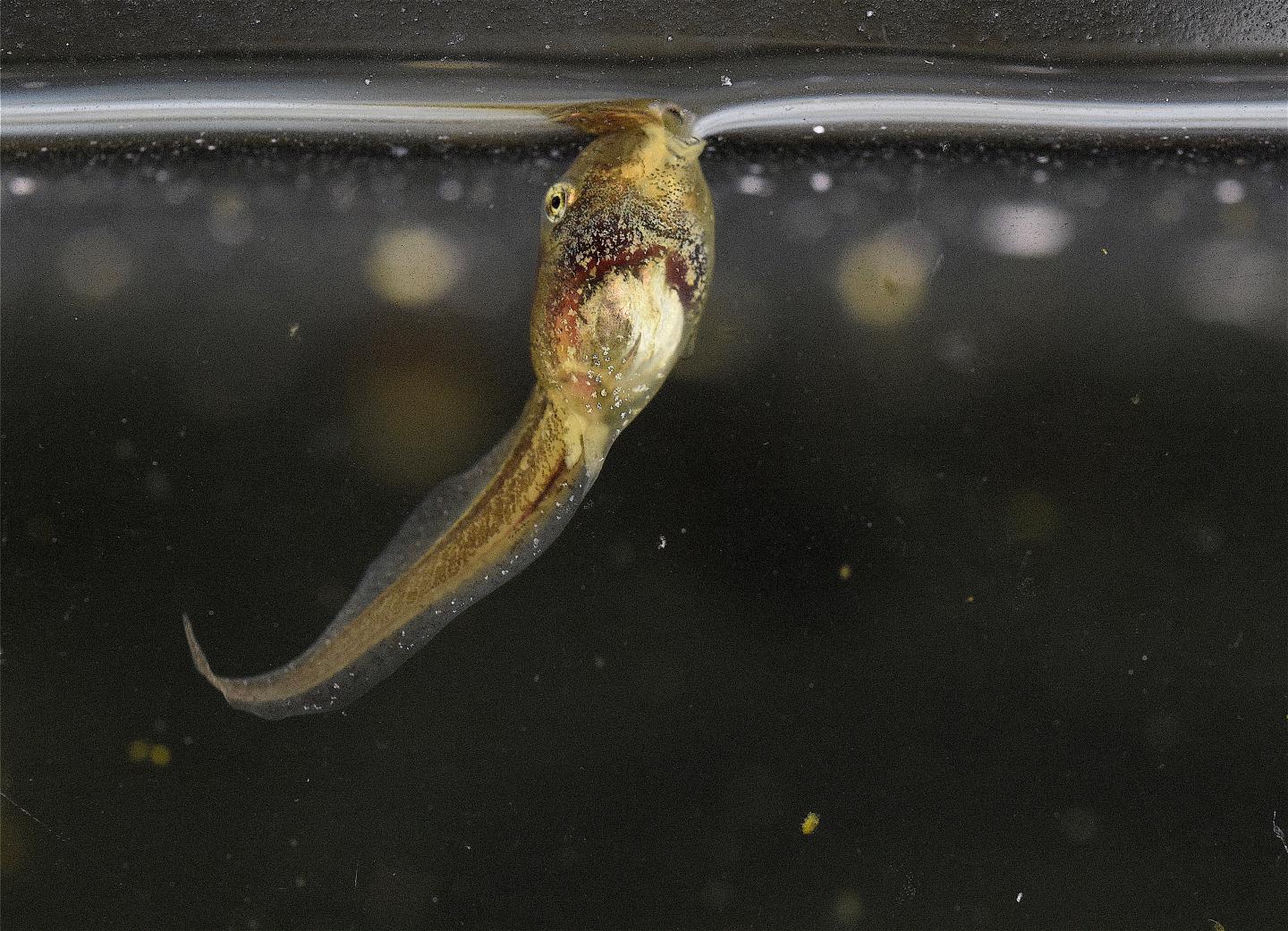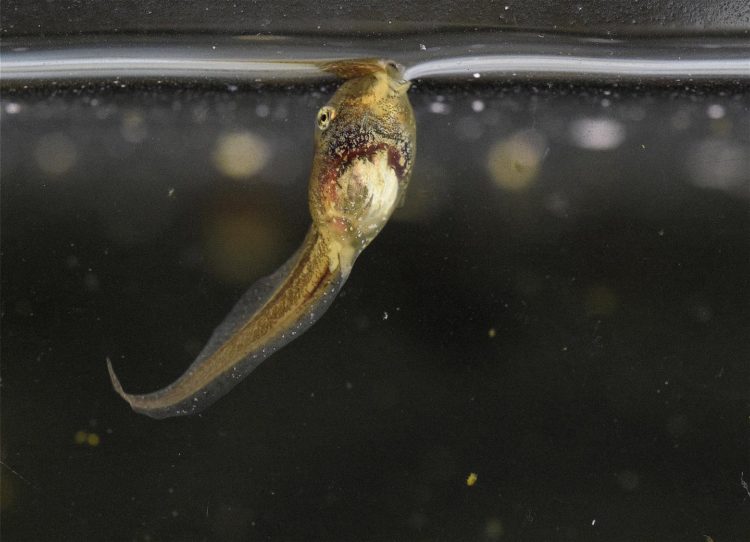
Credit: Kurt Schwenk
When it comes to the smallest of creatures, the hydrogen bonds that hold water molecules together to form “surface tension” lend enough strength to support their mass: think of insects that skip across the surface of water. But what happens to small creatures that dwell below the surface of the water?
UConn researchers have taken a close look, and in research published recently in The Proceedings of the Royal Society B, have documented how tiny tadpoles are able to access air above the water’s surface, breathing without having to break through the surface tension.
Tadpoles often live in water with low oxygen levels where fewer predators lurk, but this also means the tadpoles need a way to get to air to breathe. Tadpoles have gills, but they don’t usually provide enough oxygen for them to survive, so most tadpoles also have lungs and breathe air as a back-up. But during the earliest period of their lives, tadpoles are too small to break through the water’s surface to breathe. Luckily for the tadpoles, they have a way to work around this problem, says ecology and evolutionary biology professor Kurt Schwenk.
Tadpoles will often charge upward toward the surface of the water, yet due to their small size and the surface tension of the water, they bounce back down. While watching this during an unrelated study on aquatic salamanders feeding on tadpoles, Schwenk noticed a bubble left behind after one tadpole’s visit to the underside of the water’s surface.
“Many researchers have observed tadpoles breathing at the surface before, but unless you look very closely and slow the action down, you can’t see what is actually happening,” says Schwenk.
Using high-speed macro-videography, Schwenk and graduate researcher Jackson Phillips captured hundreds of breathing events on film shooting at the super slow motion rate of 500-1000 frames per second. The tadpoles were seen to use a never-before-described breathing mechanism they call “bubble-sucking,” a novel breathing mechanism for vertebrates captured with novel technology.
“This research would have been much more difficult to do before high-speed video cameras were developed, and that is probably why the behavior has not been described before,” says Schwenk.
The researchers studied tadpoles from five species of frogs — four of which can be found in Connecticut. What they found was that tadpoles of all species were able to inflate their lungs within a few days of hatching, despite being too small to access air.
Instead of breaching the water’s surface, the tadpoles were seen to bubble-suck. To bubble-suck, the tadpoles first attach their mouths to the undersurface of the water. They then open their jaws wide and draw a bubble of air into the mouth. What happens next was visible through the skin of some of the tadpoles. The tadpoles empty their lungs into their mouths, where the air mixes with the fresh air of the newly sucked bubble. After the mouth closes, the air bubble is forced down into the lungs, but since the bubble is larger than their lung capacity, a portion of the air remains in the mouth, which is then expelled as a small bubble that floats to the surface. The entire process takes about three tenths of a second.
Bubble-sucking appears to be an adaptation the tadpoles use while they are still small. When they grow large enough and charge the water’s surface, they are able to break the surface tension and “breach-breathe.” The researchers observed bubble-sucking in other species, as well — larval salamanders and even snails. They note that it is likely limited to organisms that can create the suction necessary, therefore arthropods, like insects, cannot bubble-suck.
“As a result of an accidental observation, my research has taken a turn–I never expected to work on these organisms,” Schwenk says. “Before, I thought that tadpoles were uninteresting. But now I find them deeply fascinating.”
Schwenk says this accidental discovery conveys an important point about research in general.
“These frog species are incredibly well-studied and very common,” he says. “Yet, one can learn new things even about the most common animals, which is a good lesson for students, because when getting into research, one can be left with the sense that it has all been done. The fact is, it hasn’t been–we just have to be observant and keep asking questions.”
###
Media Contact
Elaina Hancock
[email protected]
Original Source
https:/
Related Journal Article
http://dx.





